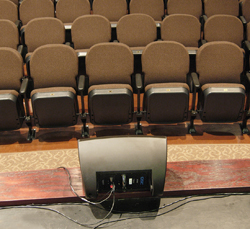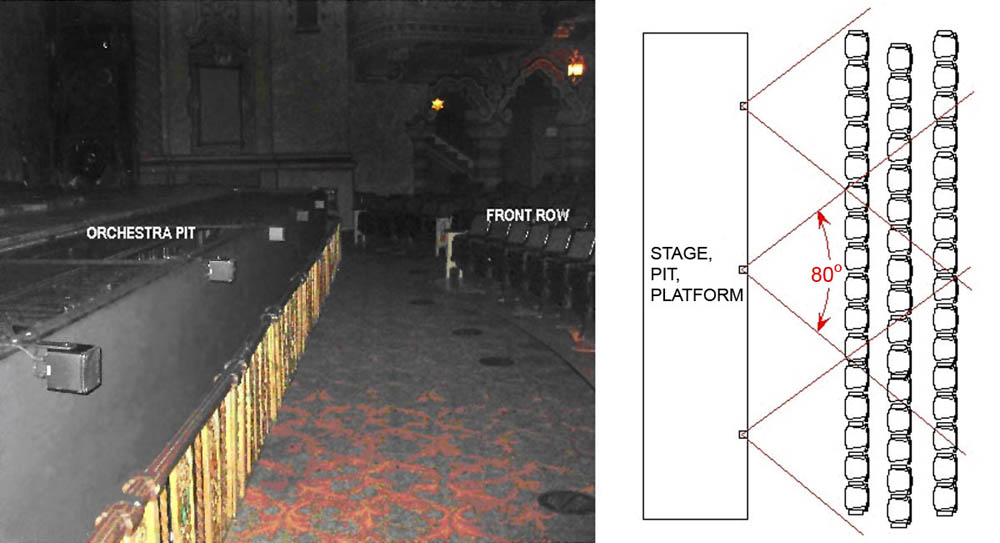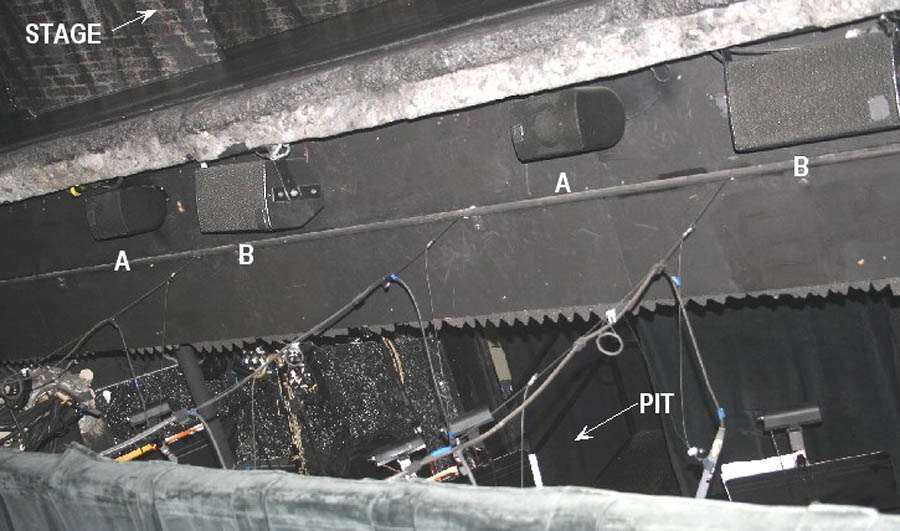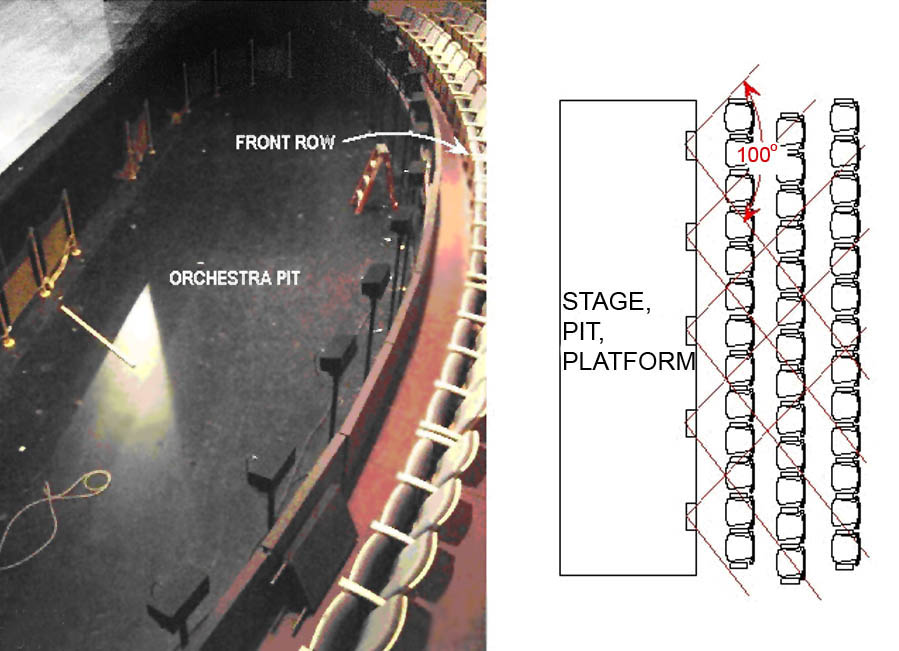
Other than in large-scale concert productions, there is seldom a need for very large front fill loudspeakers with high output. Close proximity to the target seats/patrons plus the efficiency of modern-day loudspeakers allow us to employ compact short throw devices, and in most cases, the vertical coverage is not as big of a concern as the horizontal.
Given the mounting height we’re faced with, and the throw distance required, the vertical pattern typically needs to be in the 40-degree to 60-degree range.
There are two characteristics which effect what we need in the horizontal axis: wider coverage (so fewer devices are needed) and seamless coverage, with no holes nor and overlap across the target seats.
Figures 1 and 2 show two front fill systems in theater spaces. In Figure 1, the seats are far enough away that the 80-degree conical devices are well suited and few are required. In Figure 2, the front seats are much closer and require a larger quantity of wide coverage front fills for complete coverage across the front rows. This tendency for coverage to vary depending on seating versus loudspeaker locations exists in any other type of venue or event.

Some stages and almost all platforms in worship spaces are low in elevation. When faced with this, along with the need to reach into several rows of seats, we must get the front fill loudspeakers as high as we can without encroaching into the line-of-sight of the audience.
Fortunately we can rely on the ability of middle and high frequencies to diffract, to some degree, around the listeners and often we can reach into 2-3 rows—“enough to get by”—when this condition exists.
Older and more traditional churches may provide platforms, pulpit design or other millwork at the front that can facilitate installing front fill loudspeakers at an appropriate height and without being conspicuously visible. In some cases we may even seek complete concealment which is great, provided that electro-acoustic performance is not compromised.
Various Scenarios
Unlike the other classes of fill, front fills may need to be fed a different mix than that which is sent to the rest of the loudspeaker system. In musical theater, those who are seated close to the orchestra pit are often subjected to an imbalance of instruments over voices.
Correcting this with front fills is the sound designer’s responsibility and requires the cooperation of the music director (conductor) to rehearse and then control the pit band. In this case, the front fill mix (sent via a matrix or an aux mix bus) consists of voices, and the front fill levels are set so that these voices are blended with the instruments emanating from the pit. Localization is also improved as part of this process.

Another loudspeaker-related requirement unique to some musical theater productions is the need for A/B or A/B/C loudspeakers in the primary loudspeaker system. Logically this will also be needed for front (and other) fill loudspeakers (Figure 3).
In large-scale concert sound, where there is an effort made to provide better sound at the very front, front fills need to have more horsepower than what we would need for smaller venues.
In this scale of production, we can almost always achieve what is needed with available loudspeakers such as stage monitors or medium size “full range” models that are yoked or propped up at the rear so they are aimed correctly, provided that these devices exhibit appropriate coverage patterns when in this orientation.
Loudspeakers with rotatable high-frequency horns may be of benefit here (Figure 4). Although they may not be the best candidate, multiband line array elements may be used for front fill duty in this scale of venue—provided, of course, that the HF vertical coverage is not excessively narrow, mounting height is appropriate, and aiming is done correctly.
Finally; in large concert stages we more often see center subwoofer arrays at floor level which can place more demands on the front fills which often sit on, or directly above, the subwoofers.

